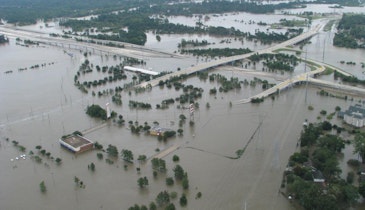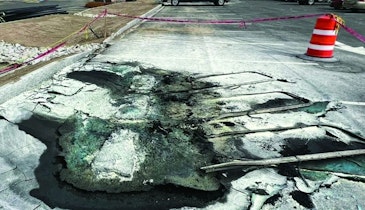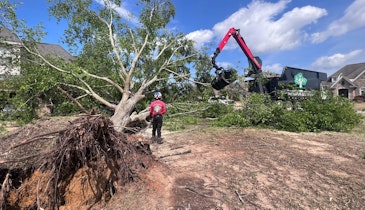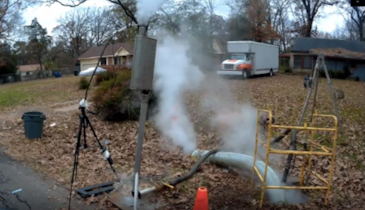When it comes to clearing debris left by storms contractors typically have few options. They can either haul it away — if they can find a landfill that will accept it — or they can burn it.
Finding a landfill that will accept brush and other forest debris left over from storms might be a challenge in some areas because it quickly fills those areas up and it can be costly to deal with.
AirBurners Inc., a Palm City, Florida-based manufacturing company, has a solution for contractors. FireBoxes are self-contained, completely assembled aboveground air curtain burners with a refractory-lined burn container for portable and permanent applications.
The FireBox designed for the high-temperature burning of forest slash, agricultural green waste, landclearing debris, storm debris, and other waste streams in compliance with the requirements of the EPA.
“A contractor would go to a transfer station, there would be FireBoxes on site and from there you’d have equipment loading them with the wood waste and you’re able to burn everything at about 40 times faster than it would in an open burn,” says Bill Priede, business development sales manager for AirBurners. “The heat inside of this thing gets to about 1,800 degrees.”
There are three models of FireBoxes — a S119, S223 and S330. The S119 is the smallest model, with throughput of 3-5 tons per hour on average. The S223 FireBoxes averages 7-9 tons per hour and the S330, averages 11-13 tons per hour.
The FireBoxes have 4-inch thick refractory wall panels filled with proprietary thermal ceramic material, two full-height refractory rear doors and two or three ignition holes depending on the model.
The S119 and S223 units are powered by three-cylinder turbo diesel engines (approximately 49 hp) and have a 58-gallon minimum fuel tank capacity, while the S330 model has a four-cylinder turbo diesel engine (approximately 75 hp) with a 110-gallon minimum fuel tank capacity.
“All it takes is just a regular torch to get that fire going and once that fire gets going nice and hot, you turn on your generator, which turns on the blower and it’ll start blowing air into the FireBox,” Priede says. “It creates a curtain so that smoke isn’t getting out, but in addition it’s bouncing off the secondary wall and creating a secondary burn, which is the most important thing because that’s the part that’s burning at 1,800 degrees.”
The only smoke emitted from the units are at the start before the generators begin circulating the air and when crews add material to the boxes, otherwise the air keeps the smoke contained to the FireBoxes.
FireBoxes are shipped from the factory completely assembled and ready for immediate use, it does not require disassembly for relocation. Lifting pads are provided for crane-lifting, but the unit can also be dragged on site on its skids.
“These don’t have floors, you’re actually burning directly onto the ground,” Priede says. “What’s nice is that the ash that it leaves behind is an excellent soil amendment, so it’s beneficial to the earth. What a contractor will do once the burn is done and they move the FireBox, they’ll spread those ashes around and that area will come back to life.” 772-220-7303; www.airburners.com






